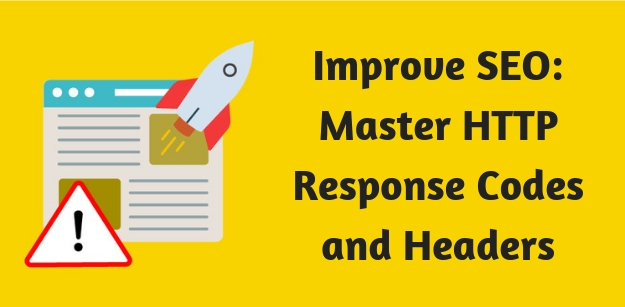HTTP protocols have a great impact on the way search engines track and index web pages. In order to optimize for SEO, you must know all the factors well, from content to the most technical. In this article Brand Sentrik’s Las Vegas SEO will explain to your how to master the HTTP codes.


Knowing the response codes and HTTPS status, alone, is not going to make your website any better position in the SERPS. But, it is part of the content delivery process and we must know how to interpret them in order to solve errors.
At this point we have to ask the question: Where do the HTTP status codes appear? Well in the HTTP headers that your web page returns when someone makes a request for it.
How do know what status codes your web page returns? There are two way to know:
● When something goes wrong on your website, because in that case it shows an error and it tell you the HTTP code returned; for example “page not found,” which is the HTTP code number 404.
● Installing an extension your browser of Web pages that allows you to track the HTTP response given by the web page accessed.
HTTP code returned, we will see the most common and what they mean. Keep this list with you always on hand until the day comes that you know them by heart
HTTP status codes
200 OK
This is the friendliest code of all. You can imagine that if everything is “OK” then there is nothing to worry about.
In essence, all web pages that load correctly and that have no redirection, return the HTTP 200 response code.
300 Multiple Choices – Several options
You know this answer, but not in this environment. This code means that the client, who makes the request, has several options to access the resources.
Honestly, the multiple options are not necessarily good, because technically, we want to load a path to our website and avoid the dreaded “duplicate content” effect.
301 Moved Permanently – Permanently Moved
The 301 and the 302 are the most known HTTP status codes and the most used in any SEO strategy.
Why is it used in SEO campaigns? Because it allows web page redirection, or even entire websites with many links and good rankings to our current web page.
A redirect of this type allows you not to lose the strength of a specific web page or the entire domain. Even in the case of the GREATEST SEO EXPERT, it helps you channel the strength of a web page towards yours.
Many SEO professionals manage to gain hundreds of links by making HTTP 301 redirects from expired domains that had good linking history.
302 Found (Moved temporarily) – temporarily moved
It’s not very different from the HTTP code 301, rather it is a matter of how things are said. With 301 you tell the person requesting information “this Web resource you are trying to open will never exist again in the web address”. While the code 302 says “for now, send all the requests to this other page, but it is probably at some point i’ll be back this web address.”
Of course, doing a redirect by code 302 tells Google that the SEO strength of that web address does not assign it to the landing page . That is why if you want to make a transfer of SEO power, always better use the status code 301.
304 Not Modified – Unchanged
This HTTP code tells the person requesting the information, such as Google crawlers or other Web browsers, that the resources of that web page have not been modified since they were last requested.
In that case, for example, if Google encounters this code, it probably will not re-index that Web page because it will not find anything new.
307 Temporary Redirect – Temporary Redirection
As such it is not an HTTP status code, because the server never finds out about the original request.
What happens with this code is that the browser makes necessary changes in the request to adjust the URL to which it knows it is correct.
A lot happens when a Web page is requested using the HTTP protocol, but the browser knows that the correct URL is the HTTPS protocol.
400 Bad Request – Wrong Request
The whole series of HTTP 400 status codes scare us, because it means that something is wrong with the web page. Let’s see which are the most common and important 400 errors for any SEO strategy.
401 Unauthorized – Unauthorized
It means that the request has not been completed because valid authentication credentials are missing. It is usually temporary, because once you correct the authentication errors you can access without problems.
In this case it is not that the page being requested has “fallen”, disconnected, but that you are not identifying correctly.
403 Forbidden – Prohibited
In this case the request is valid, but the server rejects the action and access to that web page because the user does not have access permissions
404 Not Found – Not Found
It is the most common error of the 400 series, it means the request has been made but that “there is nothing” there .
In Google Search Console, a record of this error is usually saved and the most probable cause is that you have deleted that URL, often by mistake.
In general, at the SEO level plugins are used that detect these codes (errors) 404 and they are converted into codes (redirects) 301, that is, all the pages that are not found are redirected to another web address (URL).
410 Gone – Not available
The difference with the 404 code is that, with 410, you are saying to the request ” Yes, there was a page here, but it’s gone “.
That is, it is a conscious error , while 404 is an unconscious error, that is, you could delete the page by mistake, but maybe it will come back.
With 410 you tell Google’s robot : ” this web page will never come back “.
The decision to use 404 or 410 affects the SEO strategy because depending on the answer you decide to give, the indexing agents like Google will give a time to return the Web page or not; with 404 give a grace period, with 410 no .
429 Too Many Requests – Too many requests
This is an error that has to do a lot with the measures taken by the servers to avoid saturating requests. If it gives error 429 means that there are many requests sent to the Web server and it can not be processed.
It is quite simple to solve, for example expanding the resources of the Web server, but it does not mean that it is not a fat problem. Imagine that the Google crawler (robot) is browsing your web page and the server tells you that it will not attend you because you already have many requests. Disaster!
Conclusion
As you can see throughout this article there are many HTTP status codes and many of them influence the indexing of web pages because it is the first information they receive.



